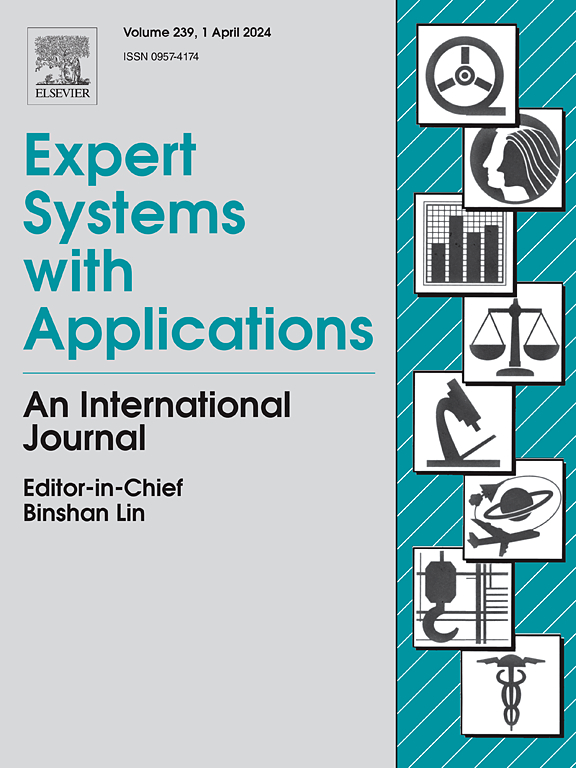Fighting against forest fire: A lightweight real-time detection approach for forest fire based on synthetic images
IF 7.5
1区 计算机科学
Q1 COMPUTER SCIENCE, ARTIFICIAL INTELLIGENCE
引用次数: 0
Abstract
Forest fires are known for their high level of randomness and unpredictability, which often lead to significant ecological damage and human life loss. Existing forest fire detection technologies are not capable of detecting small-scale flames or smoke in real time, thus failing to meet the demands of real-time detection of forest fires using Unmanned Aerial Vehicles (UAVs). To overcome these limitations, we propose an efficient and lightweight forest fire detection method that utilizes synthetic images and UAVs to achieve real-time and high-precision detection of forest fires against complex backgrounds. Firstly, we propose the Dilation Repconv Cross Stage Partial Network (DRCSPNet), which enhances the detection capabilities for multiscale flames and smoke using multi-branch parallel joint dilation convolution and batch normalization, while effectively extracting features from different stages of forest fires. Secondly, to mitigate challenges associated with extreme lighting in forest scenes and large contrast variation in fire images, we propose a Global Mixed-Attention (GMA) model across feature pyramids to enhance information lost in high-dimensional feature maps and increase the robustness of the model through a multiscale fusion strategy. Finally, we present the Lite-Path Aggregation Network (Lite-PAN) with varying scales to improve effective feature flow for multilevel forest fires, addressing challenges that arise from various climatic conditions. Furthermore, we employ Unreal Engine 5 to generate forest fire datasets in four scenarios to address the issue of relatively limited aerial forest fire datasets. According to the results of the experiment, our proposed method achieves 58.39% mAP(mean Average Precision) with 5.703 GFLOPs (Giga Floating Point Operations Per Second) while yielding a frame rate of 33.5 Frames Per Second (FPS) on NVIDIA Jetson NX. Extensive experiment results demonstrate our method has the advantage of being in real time, extremely accurate, and easily implementable compared to state-of-the-art techniques.
扑灭森林火灾:基于合成图像的轻量级森林火灾实时检测方法
众所周知,森林火灾具有高度的随机性和不可预测性,往往会导致严重的生态破坏和人员伤亡。现有的林火探测技术无法实时探测小范围的火焰或烟雾,因此无法满足利用无人机(UAV)实时探测林火的需求。为了克服这些局限性,我们提出了一种高效、轻量级的森林火灾检测方法,利用合成图像和无人机实现复杂背景下森林火灾的实时、高精度检测。首先,我们提出了 Dilation Repconv Cross Stage Partial Network (DRCSPNet),它利用多分支并行联合扩张卷积和批量归一化增强了对多尺度火焰和烟雾的检测能力,同时有效地提取了森林火灾不同阶段的特征。其次,为了缓解森林场景中极端光照和火灾图像中巨大对比度变化带来的挑战,我们提出了跨特征金字塔的全局混合注意力(GMA)模型,以增强高维特征图中丢失的信息,并通过多尺度融合策略提高模型的鲁棒性。最后,我们提出了具有不同尺度的 Lite-Path Aggregation Network (Lite-PAN),以提高多层次森林火灾的有效特征流,应对各种气候条件带来的挑战。此外,我们采用虚幻引擎 5 生成了四种场景下的森林火灾数据集,以解决航空森林火灾数据集相对有限的问题。根据实验结果,我们提出的方法在 NVIDIA Jetson NX 上实现了 58.39% 的 mAP(平均精度)和 5.703 GFLOPs(每秒千兆浮点运算),同时获得了 33.5 帧/秒(FPS)的帧速率。广泛的实验结果表明,与最先进的技术相比,我们的方法具有实时、极其精确和易于实现的优势。
本文章由计算机程序翻译,如有差异,请以英文原文为准。
求助全文
约1分钟内获得全文
求助全文
来源期刊

Expert Systems with Applications
工程技术-工程:电子与电气
CiteScore
13.80
自引率
10.60%
发文量
2045
审稿时长
8.7 months
期刊介绍:
Expert Systems With Applications is an international journal dedicated to the exchange of information on expert and intelligent systems used globally in industry, government, and universities. The journal emphasizes original papers covering the design, development, testing, implementation, and management of these systems, offering practical guidelines. It spans various sectors such as finance, engineering, marketing, law, project management, information management, medicine, and more. The journal also welcomes papers on multi-agent systems, knowledge management, neural networks, knowledge discovery, data mining, and other related areas, excluding applications to military/defense systems.
 求助内容:
求助内容: 应助结果提醒方式:
应助结果提醒方式:


